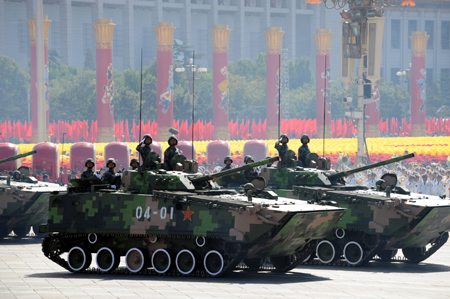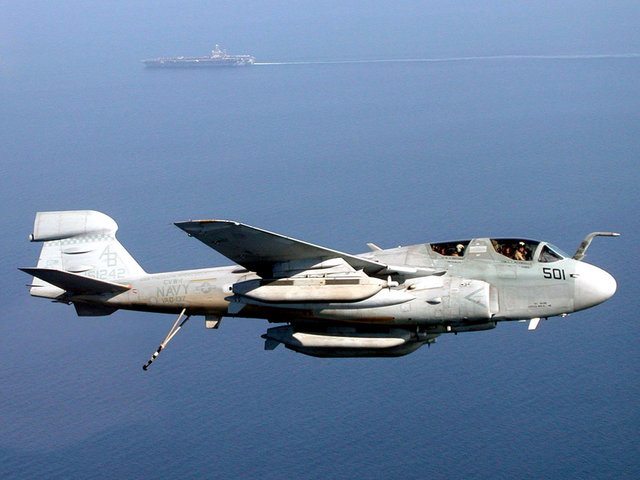China’s defence budget will double between 2011 and 2015 and outstrip the combined spending of all other key defence markets in the Asia-Pacific region, global research group IHS said Tuesday.
China’s defence budget stood at $119.8 billion last year and will rise to $238.2 billion in 2015, marking a combined annual growth rate of 18.75 percent during the period, the US-based IHS said in a forecast.
The 2015 figure exceeds the combined total of the next 12 biggest defence budgets in the region, forecast to hit $232.5 billion, and will be almost four times second-placer Japan’s defence spending that year, it added.
“Beijing has been able to devote an increasingly large portion of its overall budget towards defence and has been steadily building up its military capabilities for more than two decades,” said Rajiv Biswas, Asia-Pacific chief economist for IHS Global Insight.
“This will continue unless there is an economic catastrophe.”
The growth in China’s defence budget — which averaged 12 percent annually from 2000-2009 — will benefit from the projected surge in the gross domestic product of Asia’s largest economy in the next three years.
China will use the additional cash to modernise its equipment while reducing its manpower, resulting in a higher amount of funding per member of its armed forces, IHS said in its report.
Aside from China and Japan, the report also tracks the military spending of India, South Korea, Australia, Taiwan, Singapore, Indonesia, Pakistan, Thailand, Malaysia, Vietnam and New Zealand.
The US government’s “renewed Asia-Pacific focus” is helping fuel China’s expansion of its defence budget, according IHS Global Insight’s Asia-Pacific head Sarah McDowall.
“China’s expanding defence budget has intensified concern among various governments. Perhaps most importantly, it has prompted Washington to undertake a diplomatic campaign to reassert its profile in the Pacific,” she said.
“Washington is also keen to ensure freedom of navigation through important sea lanes in the region and to maintain a situational awareness of China’s military development,” McDowall added.
President Barack Obama, while seeking to trim military spending in response to budget pressures, has vowed to boost US power in Asia where a number of nations have voiced concern at what they see as a more assertive China.
This concern will also drive other Asia-Pacific countries to shore up their budgets but it will not be their sole impetus, said Paul Burton, senior principal analyst of IHS Jane’s Defence Budgets.
“China’s rise is not the only motivator. There are a number of lingering security issues, driven by competition for untapped natural resources, that are prompting many states to increase their defence to GDP ratio,” he said.
Vietnam and Indonesia in particular are expected to increase defence spending at a rate that exceeds their GDP growth, Burton added.
But the two countries’ defence budgets will not be able to match up to the resources of their smaller but wealthier Southeast Asian neighbour Singapore, which will spend $12.3 billion on defence in 2015, IHS predicted.










